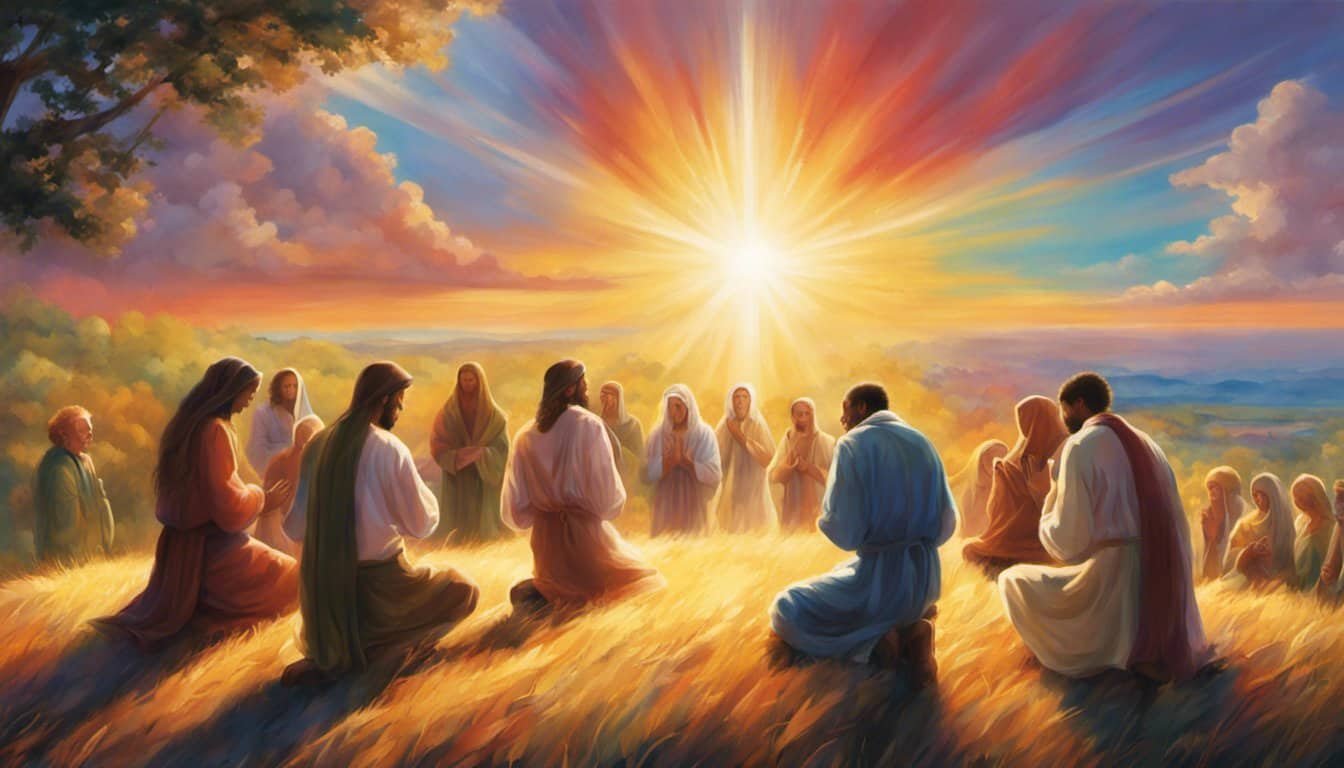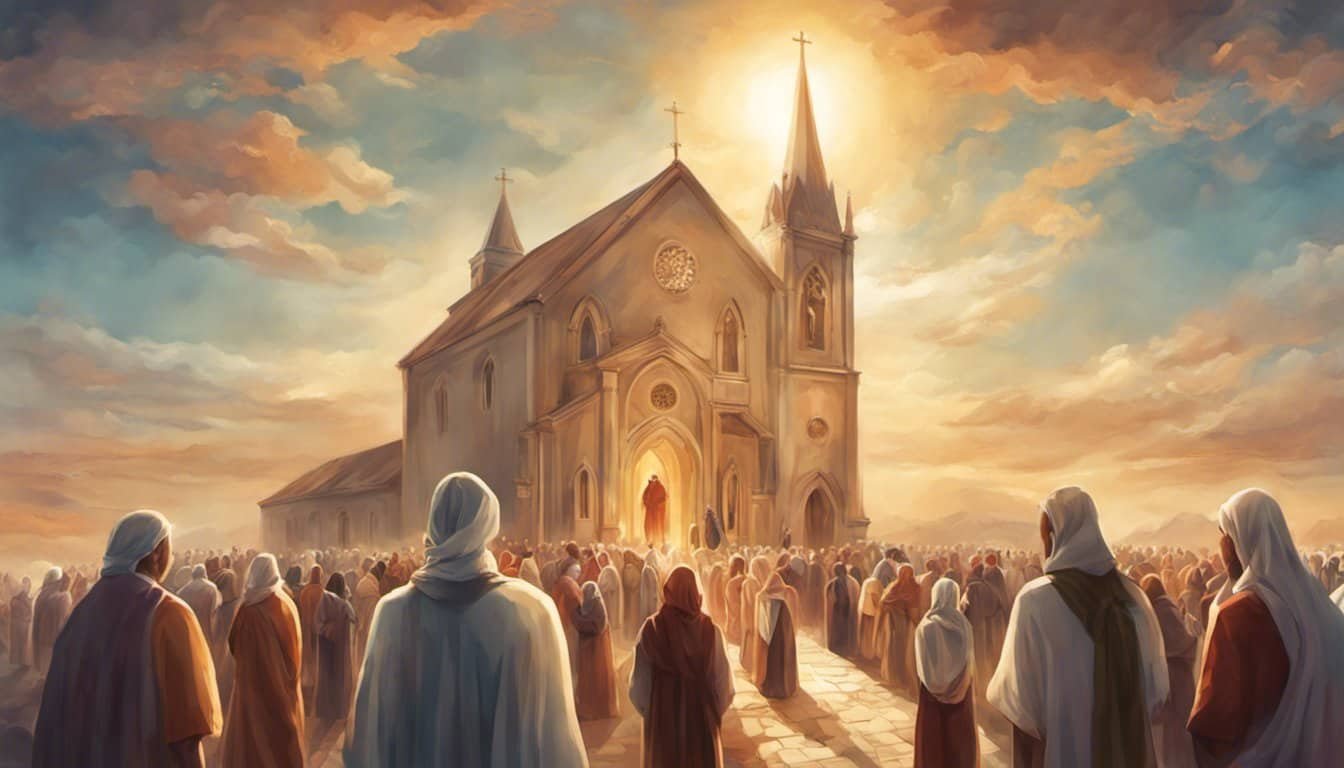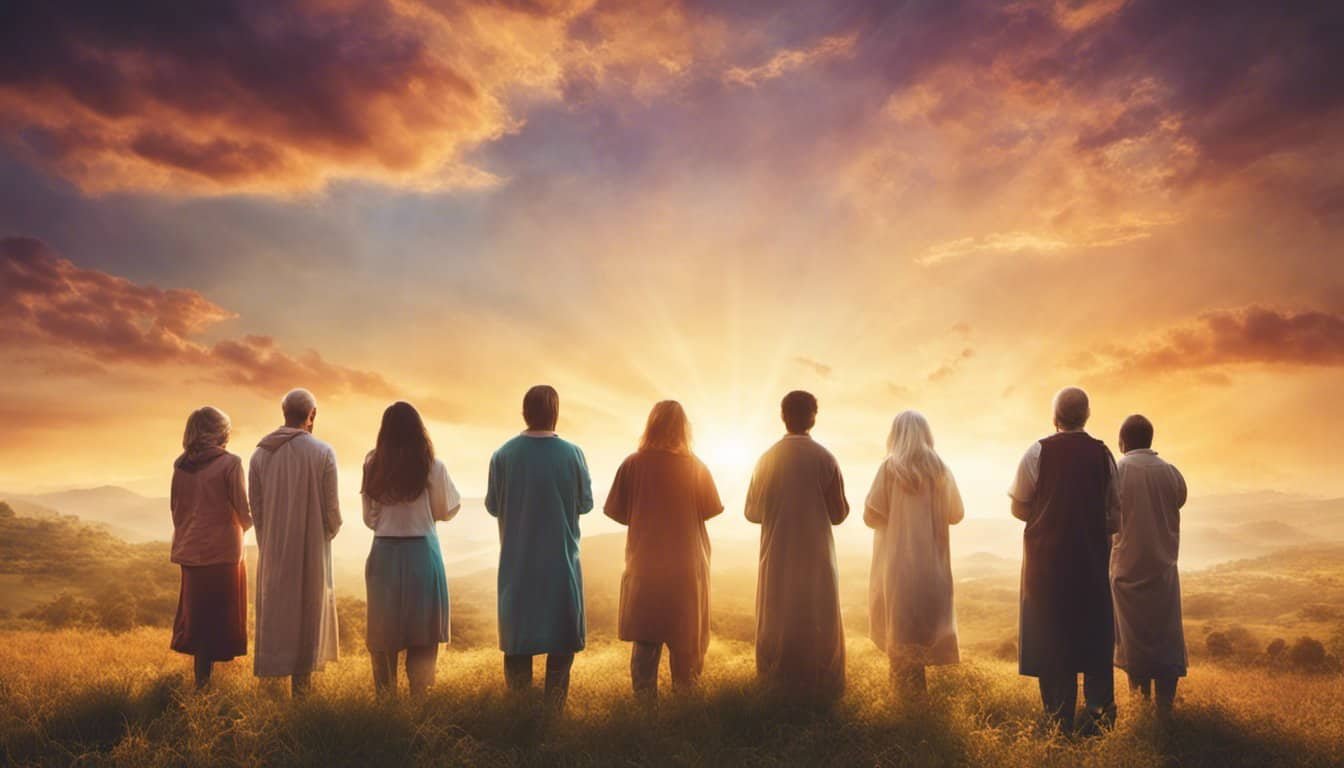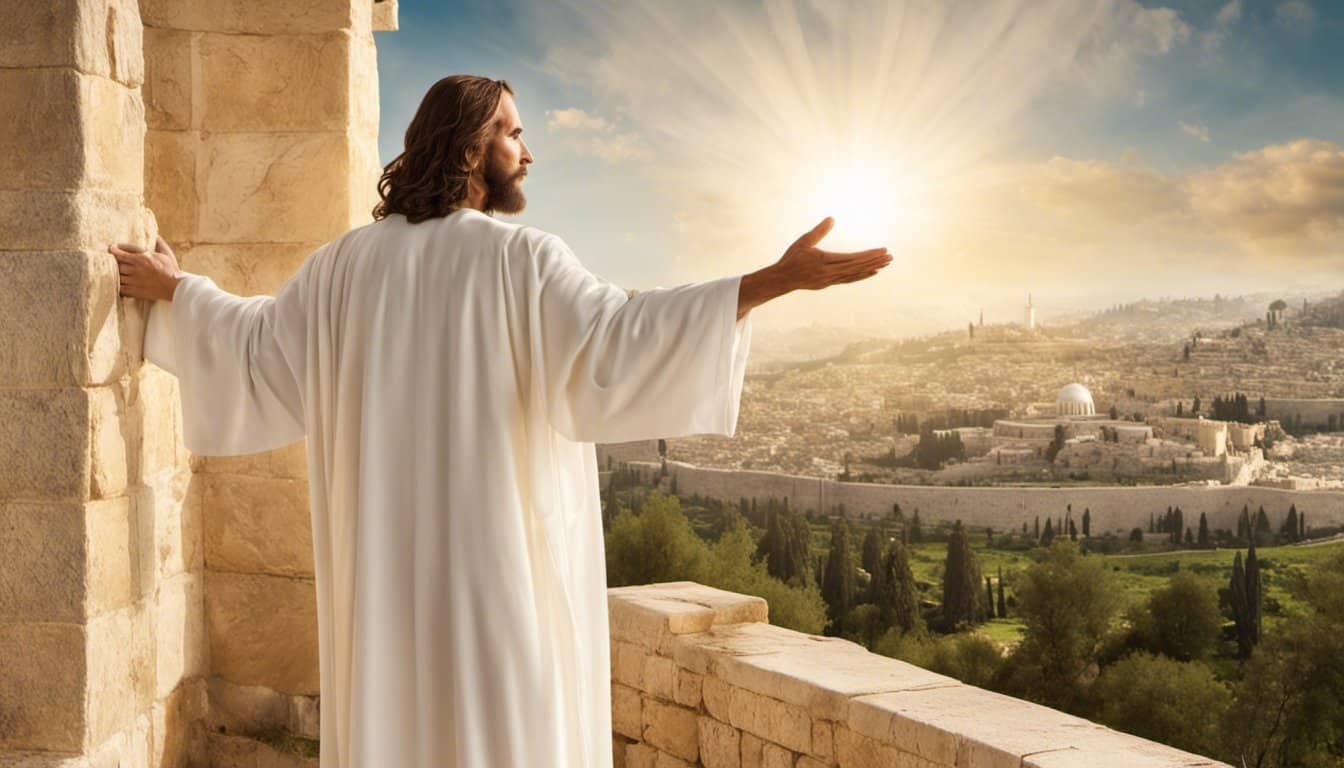The Christian view on multicultural churches emphasizes the idea of unity in diversity. This belief celebrates the different backgrounds, cultures, and experiences that people bring to their faith communities, showcasing God’s creativity and love.
Engaging in a multicultural church allows believers to learn from one another and grow in their understanding of faith, fostering a genuine sense of family across cultural lines.


As congregations become more diverse, they experience both unique challenges and significant blessings. Embracing diversity can lead to richer worship, deeper relationships, and a more authentic representation of the global church.

By prioritizing unity and understanding, congregations can create an environment where everyone feels valued and included.
Exploring the Christian approach to multicultural churches offers insight into how communities can thrive in diversity. It’s an opportunity to witness how different cultures can enhance and deepen the experience of faith for individuals and the church as a whole.
Key Takeaways
- Unity in diversity reflects God’s love and creativity in the church.
- Multicultural churches face unique challenges but offer rich blessings.
- Engaging with diverse cultures can enhance faith experiences for all.
Theological Foundations of Multicultural Churches
In exploring the foundations of multicultural churches, it is essential to understand the biblical principles of unity and diversity. The call for a diverse Christian community is deeply rooted in scripture and the teachings of Jesus Christ. This foundation shapes how believers engage with one another.
Biblical Principles of Unity and Diversity
The Bible emphasizes both unity and diversity among believers. In 1 Corinthians 12:12-27, Paul compares the church to a single body with many parts. Each member is essential, and together they reflect God’s diverse creation.
This passage highlights that diversity enriches the community, as each person brings unique gifts and perspectives.
Moreover, Galatians 3:28 states that in Christ, there is neither Jew nor Gentile, neither slave nor free, nor is there male and female. This verse illustrates that all believers are one in Christ, regardless of cultural or social differences.
Through these biblical principles, the church is called to celebrate diversity while pursuing unity in faith.
Unity in the Gospel of Jesus Christ
At the heart of multicultural churches lies the gospel of Jesus Christ. It is the unifying message that transcends cultural boundaries.
In Ephesians 2:14-16, Paul explains how Christ’s sacrifice breaks down the walls between different groups. This reconciliation offers a pathway to unity through shared faith and purpose.

The gospel encourages believers to love one another, as seen in John 13:34-35. Jesus commands his followers to demonstrate love, which becomes a mark of true discipleship.
This love fosters a welcoming environment in multicultural churches, enabling diverse members to find common ground in Christ.
John 17’s Vision for Christian Community
In John 17, Jesus prays for unity among his followers. He expresses a desire for all believers to be one, just as He and the Father are one.
Jesus’ prayer emphasizes love and connection among believers. This unity displays the reality of Christ to the world.
In a multicultural church, harmony among diverse members fulfills Jesus’ plea for unity. It demonstrates how different backgrounds can coexist and thrive in faith together.
These theological foundations reflect a clear commitment to fostering a multicultural environment within the church that honors diversity while preserving unity in Christ’s love.
Multiculturalism in Church History
Throughout church history, multiculturalism has played a significant role in shaping Christian communities. The early church exemplified unity across cultural differences. Over the centuries, various movements and practices have emerged, demonstrating how diverse backgrounds can enrich the faith experience.
Early Christian Community Practices
In the early Christian church, believers from different cultural backgrounds gathered to worship together. The New Testament highlights this diversity. For example, Acts 2 describes how people from various regions celebrated Pentecost and heard the apostles speaking in their own languages.
This emphasis on gathering in unity revealed the early church’s commitment to breaking cultural barriers. They shared meals, prayed, and supported one another, creating a close-knit community despite their differences.

The teachings of Paul often urged acceptance and love among believers, reinforcing the idea that all are one in Christ, regardless of their backgrounds.
Multicultural Churches Throughout the Ages
As Christianity spread, multicultural churches continued to develop in various regions. From Africa to Europe, the church adapted to local cultures while maintaining core beliefs.
In many instances, different styles of worship, music, and tradition enriched the church experience.
During the Reformation, diverse theological perspectives emerged, leading to many new denominations. Today, many congregations celebrate this rich tapestry of cultures. They actively embrace multiculturalism as a way to reflect God’s love, creating a welcoming environment that honors each person’s unique background.
This ongoing journey shows how cultural differences can strengthen communities within the church.
Benefits and Challenges of Multicultural Churches

Multicultural churches offer unique advantages and present distinct challenges. They can foster a strong sense of community and inclusion while also requiring careful navigation of cultural differences. Understanding these dynamics is essential for success in a diverse church setting.
Fostering Inclusion and Joy
Multicultural churches create an environment where various cultural backgrounds are celebrated. This fosters inclusion, allowing individuals to feel accepted and valued. Joy often emerges from shared experiences and diverse expressions of faith.
Many congregations incorporate different cultural elements in worship, such as music, language, and traditions. This not only enriches the church but also promotes unity among members. When people see their culture represented, they are more likely to engage actively.
Multicultural interactions can also lead to friendships that might not have formed otherwise. These connections bring joy and understanding, helping people feel part of something larger than themselves.
Navigating Cultural Differences and Practices

Cultural differences in values and practices can present challenges in multicultural churches. Worship styles, communication methods, and social norms may vary widely.
It’s important for church leaders to recognize these differences and find ways to accommodate them.
For example, some cultures may prioritize communal gatherings, while others may focus on individual expressions of faith. Balancing these priorities requires thoughtful planning and open dialogue.
Creating opportunities for conversation can help bridge these gaps. Workshops or discussion groups can encourage members to share their cultural practices and ask questions. This approach can lead to a deeper understanding and respect among all members.
The Impact of Individualism on Community
Individualism can sometimes pose a challenge in multicultural church communities. In cultures that prioritize individual achievement, the sense of community may weaken. This can create a divide when collective participation is essential for a thriving church.

To address this issue, leaders can promote collaborative activities that focus on shared goals. Encouraging volunteer work or community service projects can strengthen bonds among diverse members.
Celebrating community milestones together fosters a strong sense of belonging. When individuals see their contributions as part of a larger mission, they can overcome feelings of isolation.
Emphasizing community over individualism can lead to a vibrant, united church experience.
Practical Approaches to Unity in Diversity
Building unity within a multicultural church involves practical steps that embrace diversity. These approaches cater to the unique needs of various ethnic groups while fostering a shared worship experience.
Creating Inclusive Worship Experiences

A welcoming worship environment celebrates diverse cultural practices. This can be achieved through incorporating songs, prayers, and traditions from various backgrounds.
For example, a church might include worship music in different languages or styles, allowing people to connect with their heritage.
Church leaders can also encourage participation in worship by highlighting cultural celebrations like holidays or festivals. Doing so not only honors different backgrounds but also teaches the congregation about each other’s traditions.
Fostering an inclusive atmosphere allows everyone to feel seen and valued, promoting a deeper sense of unity.
Educational Programs and Ethnic Awareness
Understanding different cultures begins with education. Churches can launch educational programs that focus on ethnic awareness.

These programs can include workshops, discussions, and classes that explore the beliefs, values, and customs of various cultures represented in the church.
Such initiatives promote open dialogue and dispel misconceptions. They foster empathy and deeper connections among congregants.
Attendees can share their personal stories, enhancing the community’s understanding and respect for one another. This shared knowledge strengthens the bond within diverse groups and promotes unity.
Leadership Representation and Participation
Diverse leadership is crucial in fostering a unified church. Actively including representatives from different ethnic backgrounds in leadership roles ensures various voices are heard.
This representation can inspire others to participate and engage with the church community.

Churches should aim for inclusive decision-making processes. Leaders can create committees focused on diversity and inclusion. This ensures that plans address the needs of all congregants.
When individuals see leaders who reflect their backgrounds, it encourages active participation and strengthens community ties.
Contemporary Issues
Contemporary issues in multicultural churches often revolve around critical race theory and the intersection of ethnicity and cultural identity. These topics challenge church communities to address differences while promoting unity.
Critical Race Theory and the Church
Critical race theory (CRT) examines how race and racism intersect with various social issues. In the church, this theory encourages deeper conversations about racial inequality and how it affects worship and community life.

Some congregations embrace CRT to understand systemic injustices. This approach can help church members see how history shapes current experiences.
Others may resist CRT, viewing it as divisive.
Understanding CRT allows churches to confront uncomfortable truths about race. By engaging with these ideas, they can foster a more inclusive environment.
Ethnicity and Cultural Identity in the Church
Ethnicity plays a significant role in shaping cultural identity within churches. Each group brings unique traditions, languages, and perspectives. Celebrating these differences can enhance community life.
Churches can create multicultural programs that honor various cultures through music, worship styles, and events. This not only enriches the church experience but also fosters acceptance.
Balancing different cultures can present challenges. Some members may feel their heritage is overlooked. Leaders need to actively promote conversations about ethnicity and inclusion.
Creating a space where everyone feels valued helps to unite diverse members under a common purpose. By embracing and understanding cultural differences, the church can strengthen its mission of unity in diversity.












